Volume 8, Issue 2
Displaying 1-11 of 11 articles from this issue
- |<
- <
- 1
- >
- >|
-
1993Volume 8Issue 2 Pages 67-70
Published: 1993
Released on J-STAGE: March 29, 2007
Download PDF (1854K) -
1993Volume 8Issue 2 Pages 71-74
Published: 1993
Released on J-STAGE: March 29, 2007
Download PDF (1509K) -
1993Volume 8Issue 2 Pages 75-78
Published: 1993
Released on J-STAGE: March 29, 2007
Download PDF (1767K) -
1993Volume 8Issue 2 Pages 79-83
Published: 1993
Released on J-STAGE: March 29, 2007
Download PDF (2156K) -
1993Volume 8Issue 2 Pages 85-90
Published: 1993
Released on J-STAGE: March 29, 2007
Download PDF (2656K) -
1993Volume 8Issue 2 Pages 91-96
Published: 1993
Released on J-STAGE: March 29, 2007
Download PDF (2441K) -
1993Volume 8Issue 2 Pages 97-102
Published: 1993
Released on J-STAGE: March 29, 2007
Download PDF (2853K) -
1993Volume 8Issue 2 Pages 103-109
Published: 1993
Released on J-STAGE: March 29, 2007
Download PDF (2568K) -
1993Volume 8Issue 2 Pages 111-114
Published: 1993
Released on J-STAGE: March 29, 2007
Download PDF (1745K) -
1993Volume 8Issue 2 Pages 115-118
Published: 1993
Released on J-STAGE: March 29, 2007
Download PDF (1699K) -
1993Volume 8Issue 2 Pages 119-124
Published: 1993
Released on J-STAGE: March 29, 2007
Download PDF (2663K)
- |<
- <
- 1
- >
- >|
